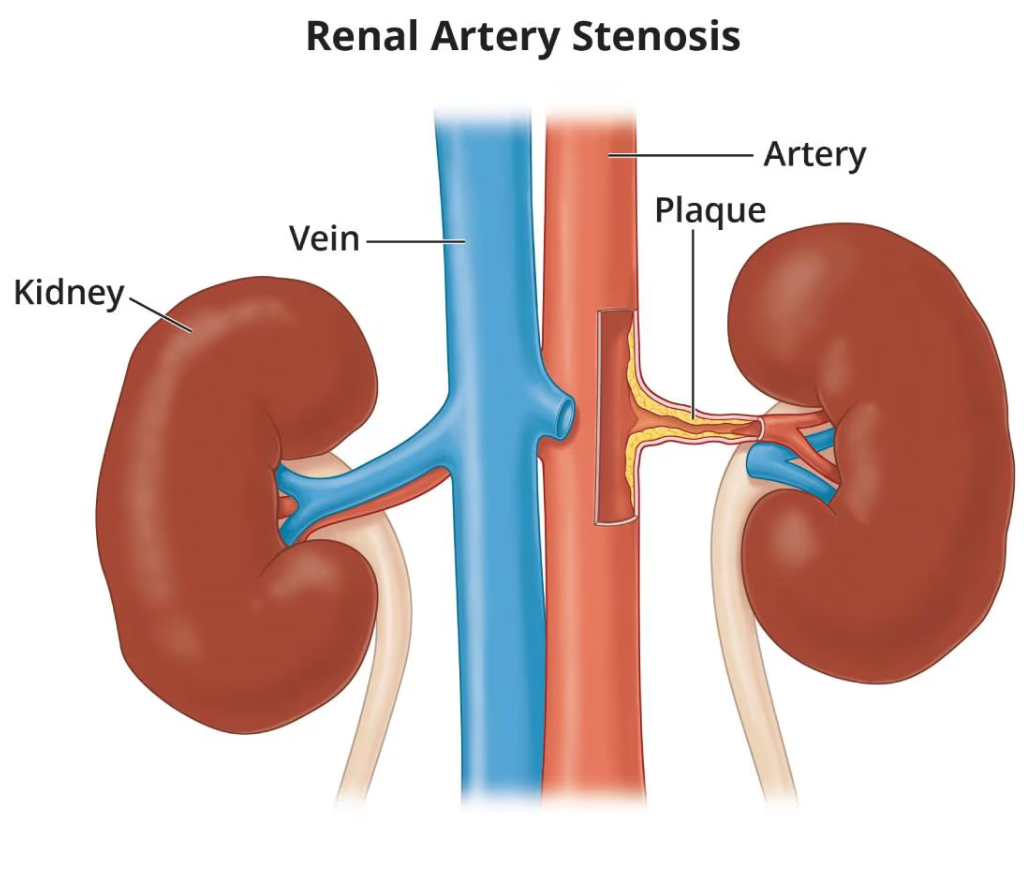Renal Artery Stenosis Stenting
- Home
- Vascular Treatment
- Renal Artery Stenosis Stenting

Renal artery stenosis stenting is a minimally invasive procedure to open narrowed or blocked renal arteries, restoring blood flow to the kidneys and improving kidney function.
Understanding Renal Artery Stenosis Stenting
Renal artery stenosis occurs when the arteries supplying blood to the kidneys become narrowed or blocked, often due to atherosclerosis. Stenting involves placing a small mesh tube (stent) in the artery to keep it open and restore proper blood flow.
Managing Renal Artery Stenosis Stenting
After stenting, patients may experience improved blood pressure and kidney function. Regular monitoring and management of underlying conditions such as hypertension and diabetes are essential for long-term kidney health.
Vascular Surgeon in Vadodara (Rutvij Shah)
For expert evaluation and treatment of renal artery stenosis, consulting with Rutvij Shah, a vascular surgeon in Vadodara, ensures comprehensive care and optimal outcomes for patients.
-
What are the symptoms of renal artery stenosis?
Symptoms may include high blood pressure that is difficult to control, decreased kidney function, and fluid retention.
-
How is renal artery stenosis diagnosed?
Diagnosis often involves imaging tests such as ultrasound, CT angiography, or renal arteriography to visualize the extent of artery narrowing.
-
Who is at risk for renal artery stenosis?
Risk factors include advanced age, smoking, high blood pressure, diabetes, and a history of vascular disease.
-
What are the benefits of renal artery stenting?
Stenting can improve blood flow to the kidneys, potentially reducing the need for medications and improving overall kidney function.
-
What complications can occur after renal artery stenting?
Complications may include stent restenosis (re-narrowing), blood clot formation, or damage to the artery.
-
How long does recovery take after renal artery stenting?
Recovery is typically quick, with most patients able to resume normal activities shortly after the procedure. Regular follow-up visits are necessary to monitor kidney function and stent patency.
Peripheral Artery Disease
Peripheral Artery Disease (PAD) occurs when plaque, composed of fats and cholesterol, builds up in the arteries of the legs or arms. This build-up makes it difficult for the blood to effectively carry oxygen and nutrients to the tissues in those areas. PAD is a chronic condition, but it can be managed and improved with certain lifestyle changes.
Understanding Peripheral Artery Disease (PAD)
Peripheral Artery Disease (PAD) is a condition characterized by the accumulation of plaque within the arteries of the legs, which deliver oxygen and nutrient-rich blood from the heart to the arms and legs. This plaque, manufactured from fats, LDL cholesterol, and other materials, regularly narrows the arteries, decreasing blood drift to the affected areas. If the plaque or a blood clot in addition narrows or blocks the arteries, it could result in tissue damage and, in intense cases, tissue death, in particular in the toes and feet.
